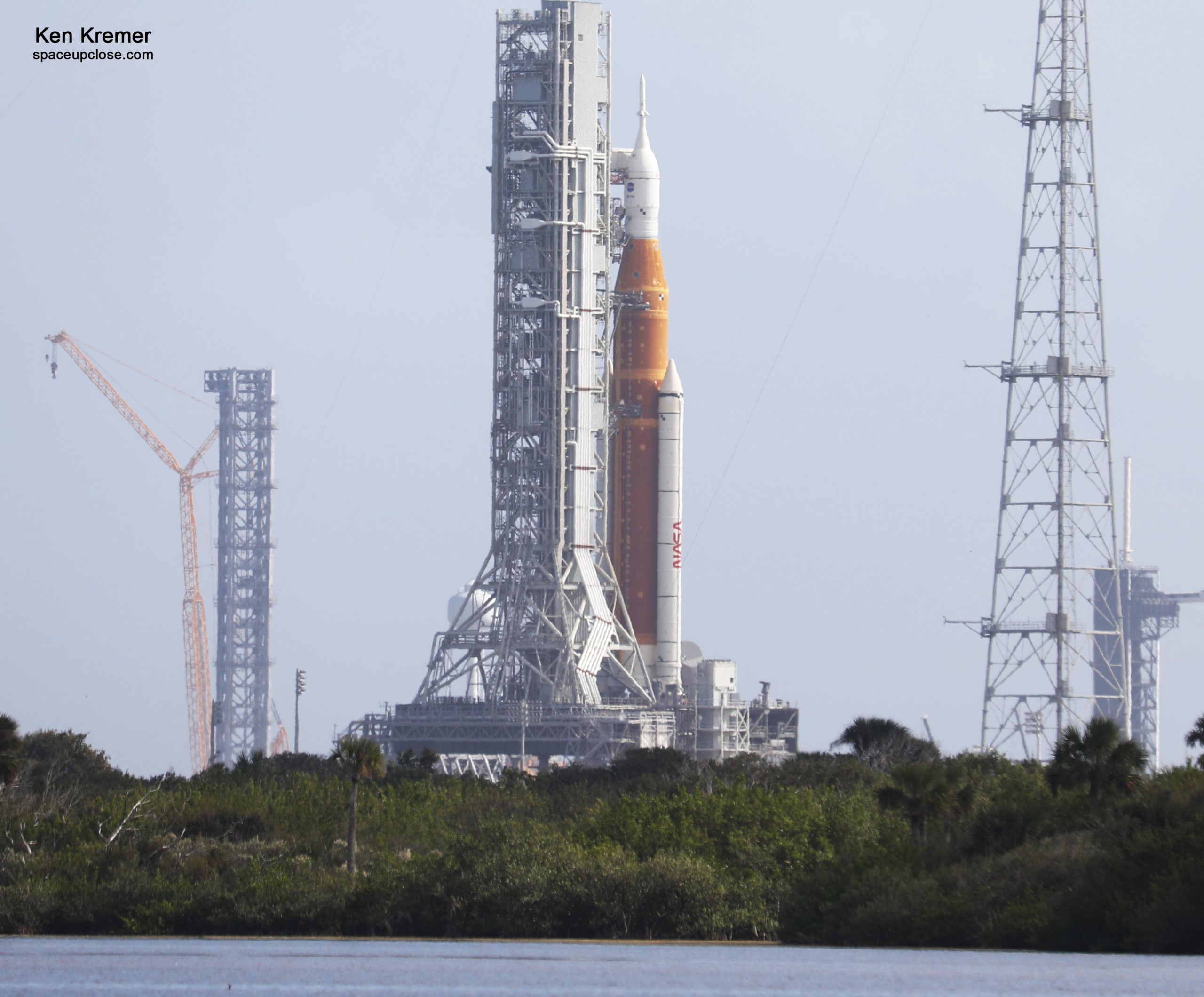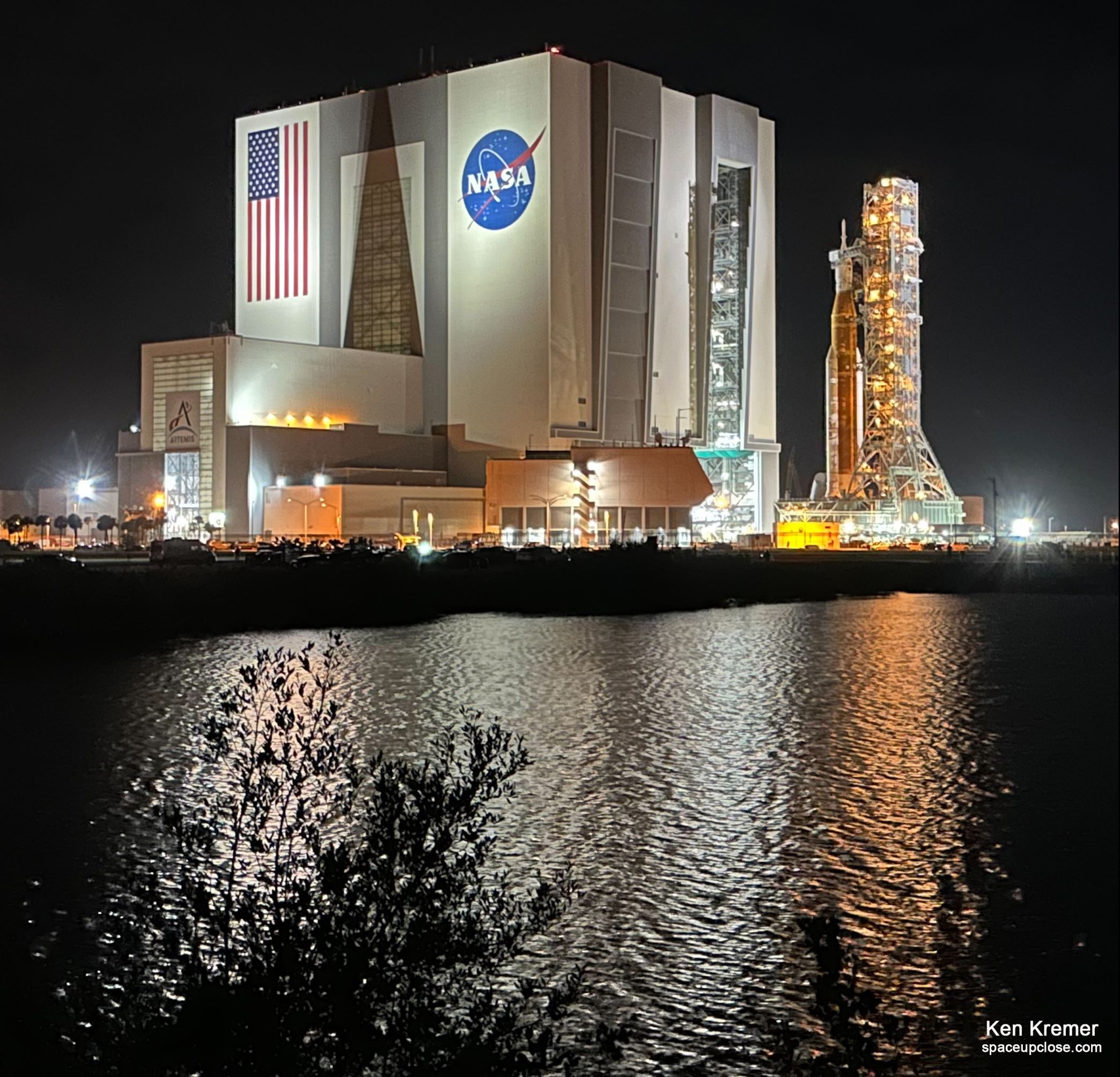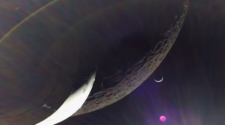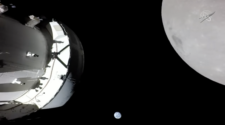
While Hurricane Nicole did not cause any significant damage to NASA’s Artemis 1 rocket stack on Thursday, Nov. 10, the program managers have delayed the next launch to no earlier than Wednesday, Nov. 16. That amounts to a two-day delay from the prior target of just past midnight on Nov. 14.
NASA decided to leave the moon rocket exposed at pad 39B to the hurricane-force winds since there was not enough time to roll it back to the Vehicle Assembly Building (VAB) shelter hangar at NASA’s Kennedy Space Center for protection from the approaching storm.
This first-ever try at a nighttime launch attempt for Artemis 1 is now rescheduled for Nov. 16 at 1:04 a.m. EST, with a launch window that extends for two hours until 3:04 a.m. EST.
A Nov. 16 launch would result in a splashdown on Sunday, Dec. 11 to conclude the mission.
If needed, NASA has a backup launch opportunity on Saturday, Nov. 19, and will coordinate with the U.S. Space Force for additional launch opportunities.
The looming Nicole forced NASA to again halt pad operations and postpone liftoff of NASA’s Space Launch System (SLS) rocket integrated with the Orion crew spacecraft for the Artemis I mission because of extreme wind and rain threats approaching Florida just days after it rolled back out to the pad.
“NASA has decided to re-target a launch for the Artemis I mission for Wednesday, Nov. 16, pending safe conditions for employees to return to work, as well as inspections after the storm has passed,” said NASA. “Adjusting the target launch date will allow the workforce to tend to the needs of their families and homes, and provide sufficient logistical time to get back into launch status following the storm.”
NASA managers said it was safer to keep Artemis 1 out at pad 39B rather than move it back to the VAB during high winds and rain – that were deemed a greater threat to the rocket structural integrity while in motion.
They made the decision to keep Artemis 1 at the pad after extensive discussions concluding Sunday evening, Nov. 6.
Based on expected weather conditions and options to roll back ahead of the storm, the agency determined Sunday evening the safest option for the launch hardware was to keep the Space Launch System (SLS) rocket and Orion spacecraft secured at the pad.
“The SLS rocket is designed to withstand 85 mph (74.4 knot) winds at the 60-foot level with structural margin,” stated NASA. “The rocket is designed to withstand heavy rains at the launch pad and the spacecraft hatches have been secured to prevent water intrusion.”
There is virtually no protection for Artemis 1 out at the pad where it remained during the storm.

For the fourth and hopefully final time NASA’s Space Launch System (SLS) rocket integrated with the Orion crew spacecraft for the Artemis I mission rolled out to launch pad 39B from the iconic Vehicle Assembly Building (VAB) at NASA’s Kennedy Space Center in Florida starting just before midnight Friday, Nov. 4, ahead of the next planned launch attempt.
The crawler-transporter hoisted the 322-foot-tall integrated Space Launch System (SLS) rocket and Orion spacecraft stack standing atop the mobile launcher inside the VAB and began the approximately 4.2-mile (6.8 km) nighttime journey from the VAB to the launch pad at about 11:17 p.m. EDT. Thursday, Nov. 3, under excellent weather conditions.
At that time Nicole was not a named storm and was not felt to be a significant threat to the rocket or launch timing.
The Artemis 1 stack has a mass of 21.4 million pounds and is comprised of the 32-story tall SLS/Orion rocket, its mobile launch platform, and the crawler-transporter.
NASA’s Artemis I flight test is the first integrated test of the agency’s deep space exploration systems: the Orion spacecraft, SLS rocket, and supporting ground systems.



